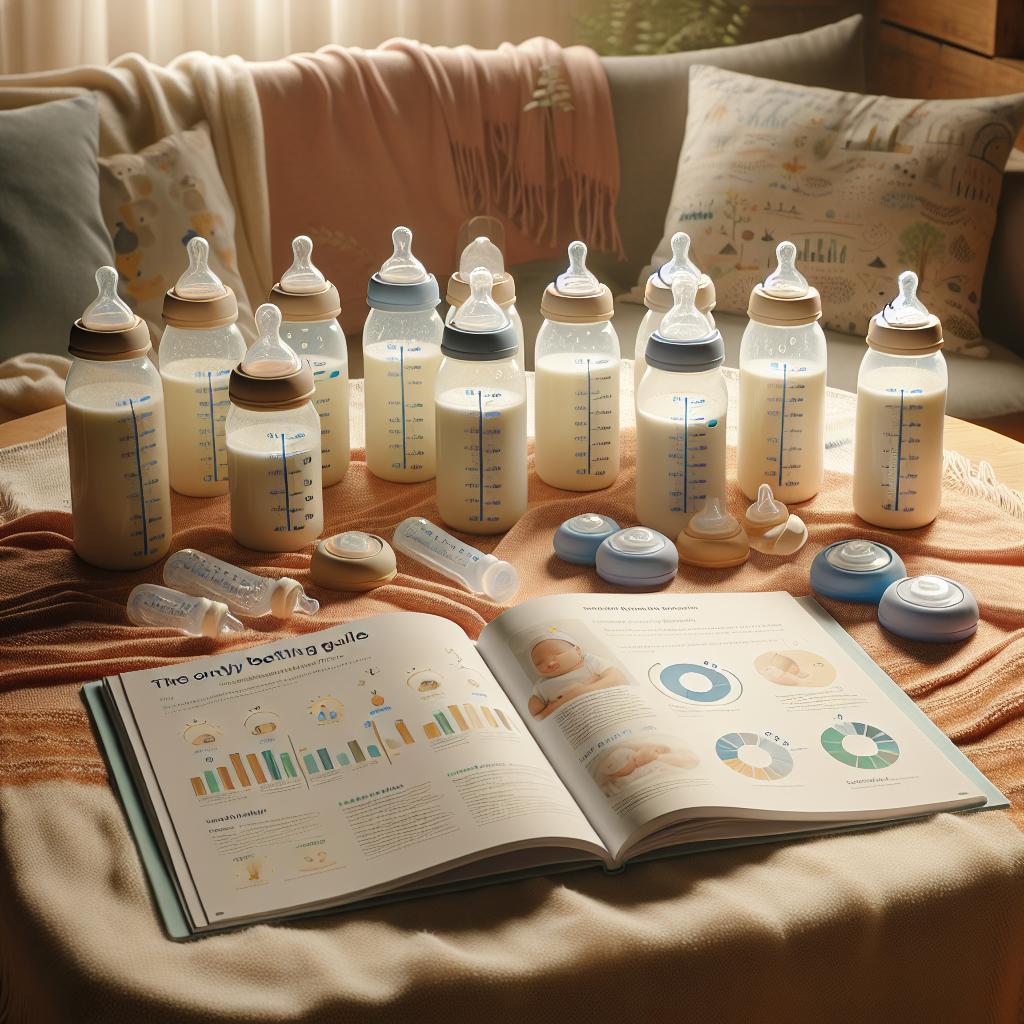The Must-Have Bottle Feeding Tips I Wish I Knew Sooner
Understanding the Basics of Bottle Feeding
When it comes to feeding your baby, knowing some key bottle feeding tips can prove incredibly helpful. Whether you’re transitioning from breast to bottle, supplementing with formula, or exclusively bottle feeding, understanding the basics is fundamental. So, how do you ensure that feeding time is a smooth process for both you and your precious one?
Choosing the Right Bottle
Every baby is unique so finding the perfect bottle for your child might require a bit of trial and error. Rest assured, however, that with some patience and these bottle tips you’ll find what works best for your baby. Don’t be discouraged if the first bottle you try doesn’t work out- remember that persistence is key.
Ensuring Proper Bottle Feeding Posture
One of the most common advice for bottle feeding is ensuring that your baby is in an upright position. This posture helps prevent ear infections and aids digestion. The bottle should also be tilted enough that the formula fills the nipple entirely, preventing your baby from swallowing air, which can lead to discomfort and gas.
Timing the Feeding Sessions
Unlike breastfeeding, where the baby sets the pace, bottle feeding tends to be more regulated. A newborn usually requires feeding every 2-3 hours, but as they grow older, this pattern may gradually change. Understanding your baby’s hunger cues, such as increased activity or mouthing, can help in timing the feeding sessions appropriately.
Cleaning and Sterilizing the Bottle
Ensuring that the bottle is properly cleaned and sterilized is crucial for your baby’s health. Any leftover milk can harbor bacteria that might lead to illness. Always clean the bottles immediately after use, ensuring every part is thoroughly washed. Regular sterilizing, especially for newborns or premature babies, is also recommended. You can check out some handy kitchen hacks to make this task easier.
Keeping the Experience Intimate
A vital feeding advice often overlooked is nurturing the bond between the baby and the parent. Even though bottle feeding might lack the skin-to-skin contact of breastfeeding, it doesn’t mean that intimacy should be compromised. Hold your baby close, make eye contact, and handle the bottle yourself, to ensure your baby still feels the connection and care.
Considerations for Breastfed Babies
- Smooth transition: Transitioning from breast to bottle can be a challenge for some babies. To make the process smoother, you might want to consider bottles designed for breastfed babies. Here is an example of a bottle that worked wonders for a breastfed baby.
- Feeding pattern: If you’re supplementing with formula, try maintaining your regular breastfeeding pattern to help keep up your milk supply.
- Be patient: Some breastfed babies might initially resist bottle feeding. Patience and persistence can go a long way in these instances. For more insight, check out this helpful resource on bottle feeding breastfed babies.
Making the Move to Solid Foods
As your baby grows, you’ll eventually embark on the exciting journey of introducing solid foods. The transition should be gradual, starting with purees before moving to more textured foods. Remember to continue bottle feeding during this period, as your baby still requires the nutrients from milk or formula.
Introducing Formula to Your Baby’s Diet
If you are supplementing with or completely transitioning your baby to formula, it can be intimidating. There are a multitude of formulas available on the market, and choosing the one that suits your baby’s needs best might be overwhelming. However, it’s essential to remember that while breast milk is the ideal nutrition resource, formula is a healthy alternative designed to mimic breast milk!
The array of options include whole milk-based, soy-based, hydrolyzed protein, lactose-free, and specialized formulas. It would be best if visited a pediatrician to discuss the options and make an informed decision based on your baby’s needs.
Ensuring Safe Handling and Storage of Formula
In contrast to breast milk, handling and storing formula require careful consideration to make certain it’s safe for consumption. Bacteria can thrive in a warm environment, so ensure you prepare and store the formula correctly.
- Preparation: Always wash your hands before preparation. Use clean and sterilized bottles, and follow the instructions on the formula package.
- Storage: Prepared formula can be stored in the refrigerator for up to 24 hours. Any unused formula should be discarded after this period.
- Warming: A baby may prefer warmed formula; however, never microwave the bottle as it can create hot spots. Instead, warm it using a bottle warmer or warm water.
Taking Special Care of Premature Babies
If you’re the parent of a premature baby, the feeding requirements might be slightly different. Extra care is necessary to ensure that your baby is getting adequate nutrition for growth and development. You might need to use special bottles or feeding techniques and add supplements, depending on your baby’s needs.
Dealing with Feeding Problems
Remember, every baby is unique, and so are their feeding behaviours. Several potential issues might arise while bottle feeding, such as refusal to take the bottle or excessive spit-up or gas. If you notice your child is having trouble during feeding, always consult with a healthcare provider to devise a suitable solution.
Understanding the Role of Bottle Feeding in Child Development
Beyond being a mode of nutrition delivery, bottle feeding plays a significant role in your child’s development. The feeding sessions provide a one-on-one bonding opportunity for you and your baby, fostering a secure attachment. They can also serve as a platform for sensory stimulation through touch, sound, and smell. Taking the time to interact with your baby during feedings can contribute meaningfully to their emotional and cognitive development.
Deciding When to Wean Off The Bottle
Understanding when your baby is ready to graduate from bottle to cup requires recognizing certain cues. Most babies are ready to start this process between 9 and 12 months, but the timing can vary greatly. Watch for behavioral signs like throwing the bottle or trying to drink from your cup. The weaning process should be gradual and considerate of your baby’s comfort.







